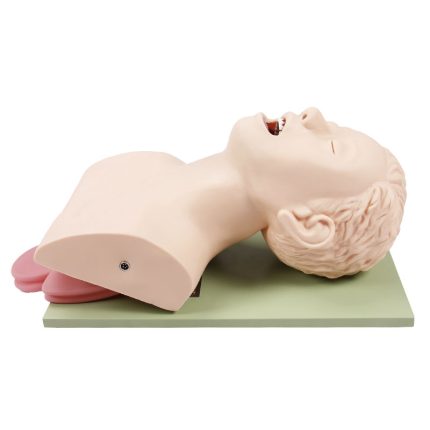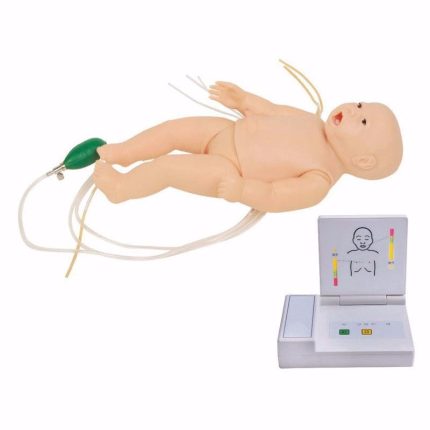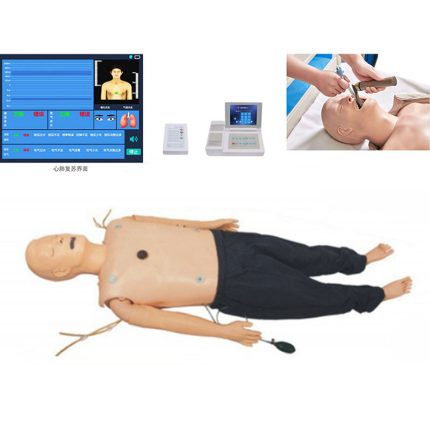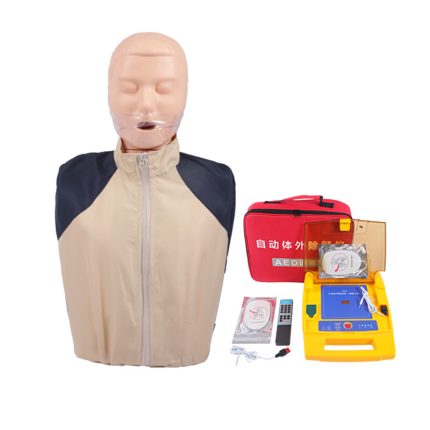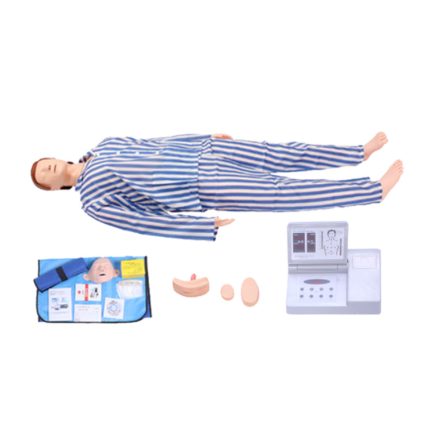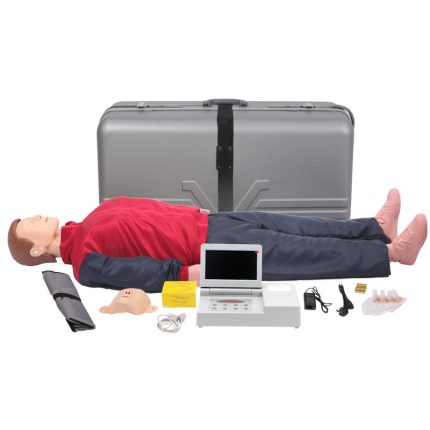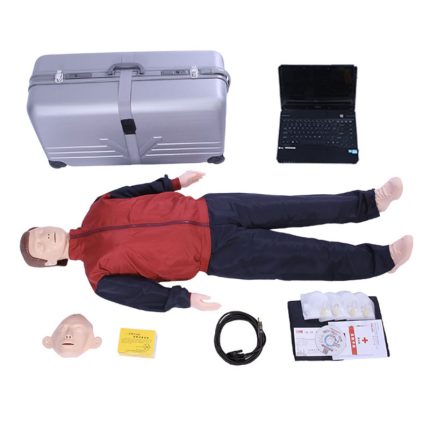Executive Standard: American Heart Association (AHA) 2020 Guidelines for International Cardiopulmonary Resuscitation (CPR)&Cardiovascular First Aid (ECC)
Features:
■ Simulation of standard airway opening.
■ Full voice prompts with adjustable volume;
■ Manual hand position chest compression display alarm:
– Correct compression position, wrong indicator display and wrong voice prompts;
– Correct depth of compression (1/3 of the anterior and posterior diameter area), wrong (less than 1/3 of the anterior and posterior diameter or more than 1/3 of the anterior and posterior diameter) indicator light display and wrong voice prompts.
■ Manual mouth-to-mouth breathing (blowing) display alarm:
– Indicator light and voice prompt for tidal volume <30ml~50ml<;
– If the tidal volume blown in is between 30ml and 50ml, the correct indicator is displayed;
– The tidal volume blown in is too fast or too large, causing gas to enter the stomach indicator light display and voice prompt.
■ Pressure and artificial respiration ratio: 30:2.
■ Operation cycle: compression and artificial blowing 30:2 to do five cycles of CPR operation.
■ Operation frequency: the latest international standards: greater than or equal to 100 times / min, (100, 110, 120 times / min three optional)
■ Operation mode: training operation.
■ Check brachial artery reflection: hand cupping pressure ball, simulating brachial artery pulsation.
■ Working condition: using 220V power supply. Or use 4 No. 1 battery DC power supply state work, adapt to the field without power place training.
Standard Set Configuration:
■One advanced resuscitation infant mannequin;
■One electronic monitor;
■One portable Oxford bag;
■One pair of power adapter and power cord;
■One pair of data cable;
■One resuscitation operating mat;
■One box of barrier mask (50 sheets/box) ;
■Four sets of interchangeable lung bladder devices;
■One copy of instruction manual.



